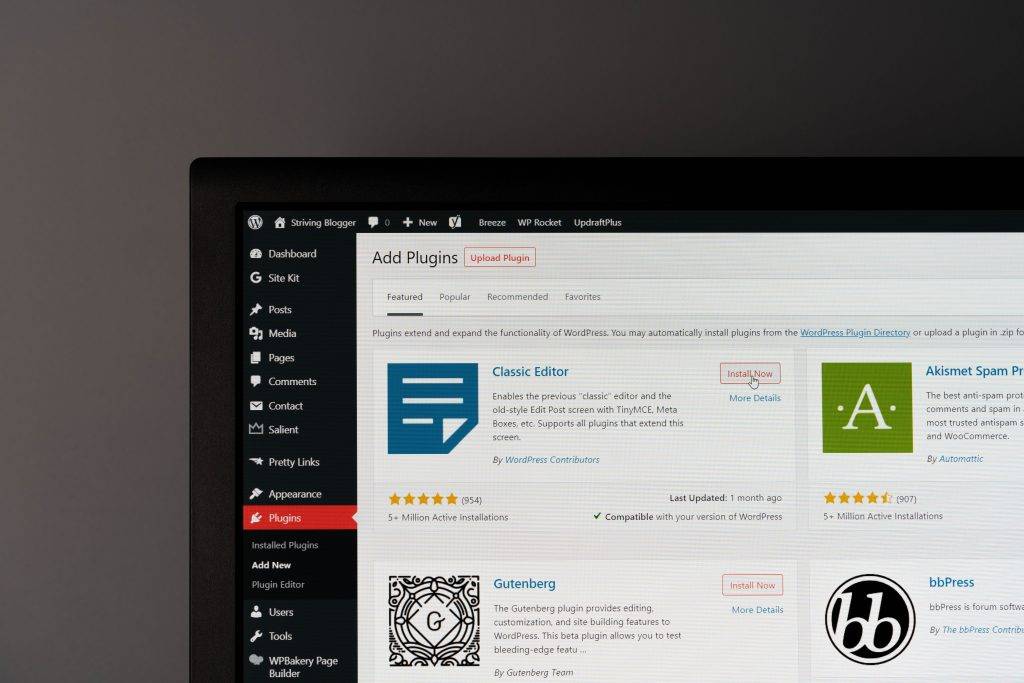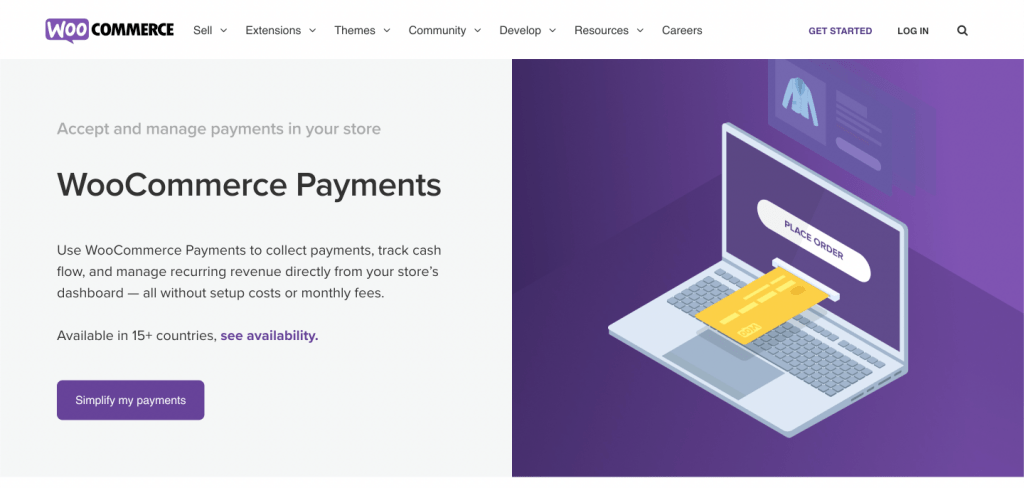
Do you want to start selling products online but don’t know how? With WordPress, it’s easier than you think! In this article, we will show you how to create an e-commerce site using WordPress. We will walk you through the process step-by-step, and by the end of this tutorial, you will have a functioning online store. So let’s get started!
In this article, we will cover the following topics:
- What is an e-commerce site?
- What is WordPress and what are its benefits for creating an e-commerce website
- The pros and cons of WordPress as an e-commerce platform
- How to set up your WordPress site, including choosing a domain name and hosting provider
- The basics of creating pages and posts on your website
- Adding products to your online store
- Setting up payment processing
- Tips on creating an effective marketing strategy for your new e-commerce business
What is an e-commerce site?
An e-commerce site is a website that allows businesses to sell products and services online. E-commerce sites can be used to sell physical products, digital products, or both. They typically have a shopping cart feature that allows customers to add items to their cart and checkout with ease.
Have you ever used Amazon to purchase something off the internet? You’ve participated in e-commerce! Amazon is one of the most popular e-commerce sites on the internet. Today, business owners can get an e-commerce site built from scratch in just weeks or even days.
Types of e-commerce sites include:
Marketplaces like Etsy and eBay that allow you to sell your products on their platform.
Online stores, such as Amazon or Walmart.com, where customers can purchase items directly from the company.

What can you sell online?
The possibilities are endless! You can sell physical products, digital products, or a combination of both. Physical products include things like clothes, toys, and home goods. Digital products include things like e-books, software programs, and music downloads.
How can I get started selling online?
There are many ways to get started selling online, but one of the easiest ways today is still by using WordPress. This platform allows you to create an e-commerce website with little coding experience needed. It’s also free to get started and easy to use!
What is WordPress and what are its benefits for creating an e-commerce website?
WordPress is a Content Management System (CMS) that allows you to create and manage your website. WordPress was originally created as a blogging platform, but it has evolved over the years into much more than just that! Today we use WordPress to build websites for all types of businesses. It’s easy enough for beginners while still being powerful enough to handle large websites with many pages.
WordPress powers over 37% of all the websites on the internet, which makes it one of the most popular Content Management Systems (CMS) out there today. It’s free to download and install on your computer, so if you’re on a budget you don’t have any upfront costs if you want to use WordPress as you tinker with setting up an e-commerce platform. In fact, it’s one of the fastest ways to get up and running with a new website (as little as 4 minutes in some cases).
There are also many plugins and themes available for WordPress that allow you to customize your website to look exactly the way you want it. This is a huge plus, as most other e-commerce platforms do not offer nearly as much customization potential.
The pros and cons of WordPress as an e-commerce platform

Now that you know the basics of e-commerce and WordPress, let’s talk about some pros and cons of using this platform to create your e-commerce website.
Pros:
WordPress is free to try! You can get started with e-commerce without any upfront costs and no subscription fees if you choose to go that route later on down the road as your business grows.
WordPress has tons of e-commerce plugins available for you to use on your website, allowing you to customize how customers interact with products or purchase items from your store. You can even find templates that will help make sure everything looks just as it should when visitors arrive at the site without having to spend too much time creating everything from scratch.
WordPress is extremely user-friendly and can be easily learned by anyone with basic computer skills. As the most popular content management system, there are also tons of free resources and YouTube videos on how to build your site. If you’re not comfortable coding or don’t have the time to learn, WordPress makes it easy for you to create a website without needing those skills.
Cons:
Since WordPress is so popular, it’s also a prime target for hackers and other cybercriminals. Make sure you secure your e-commerce website with an SSL certificate, a strong password (we recommend using a tool like LastPass), as well as installing WordPress security plugins from trusted sources such as Wordfence or Sucuri Security to help protect against any potential threats.
WordPress e-commerce sites aren’t always the easiest when it comes to search engine optimization (SEO). If you’re not familiar with SEO, it’s the process of optimizing your website so that it appears higher in search engine results pages (SERPs), making it easier for potential customers to find. While WordPress does have some built-in features to help with SEO, it can be more difficult than other e-commerce platforms like Shopify when it comes to getting your e-commerce website ranked highly on SERPs.
Overall, WordPress e-commerce websites are a great option for those who want to start selling online quickly and easily without much upfront cost or technical knowledge required. Just make sure you take the necessary security precautions to protect your website and invest some time in learning about SEO so that you can maximize your traffic and sales.
Now that we’ve gone over some of the basics of e-commerce and WordPress, let’s talk a little bit more about how to set up your WordPress site and get started.
How to set up your WordPress site, including choosing a domain name and hosting provider
Finding a hosting provider
The first step in creating an e-commerce website with WordPress is finding a hosting provider for your e-commerce store. This is basically where all of the files associated with your e-commerce website will be stored on their servers, so it’s important that you choose one that offers both reliable service and security (as we mentioned above). There are a number of great hosting providers out there, and we would like to shamelessly recommend our own hosting services if you’re concerned about the speed and service of your e-commerce site.
Getting a domain name
Once you’ve chosen a hosting provider, the next step is to purchase a domain name for your e-commerce store. This will be the web address that customers use to visit your site, so it’s important to choose one that is easy to remember and relevant to your e-commerce business. You can either purchase a domain name through your hosting provider or through a separate domain registrar like GoDaddy, Namecheap, etc.
After you’ve chosen a domain name and hosting provider, the next step is to set up your WordPress site. You can get going in just a few minutes if you choose the right website team. WordPress provides a very easy-to-use one-click installation process that will automatically install WordPress on your hosting account.
If you’re not familiar with coding or want to save some time, there are also a number of great WordPress templates that you can use to create your e-commerce website. These templates will help you get started quickly and easily with a professional e-commerce design that is completely customizable to suit your needs.
If you’d prefer not to use a template and want to start from scratch, check out our guide on getting started.
Once you have the foundation of your site prepared, it’s time to build out the pages!
The basics of creating pages and posts on your website
There are a few basic things you need to know about creating pages and posts on your WordPress e-commerce website.

Add a New Page
Pages are static pages that don’t typically change, while posts are articles or blog entries that can be updated regularly. When it comes to setting up your e-commerce store, you’ll likely want to create a number of different pages for different purposes. For example, you’ll probably have a home page that introduces your e-commerce store and provides links to other important areas on the site such as “about us”, “contact us”, etc.
You can create these pages by going into your WordPress dashboard, clicking on Pages in the left menu and then selecting “Add New”. This will bring up a blank page where you can enter the title of your page and start writing the content.
Add a New Post
Posts are created in a similar way, but you’ll want to use the Posts menu instead of Pages. Posts are typically used for blog entries or articles on your e-commerce website, and you can add images, videos and other media to help improve the look and feel of your content.
You can also add tags and categories to your posts to help organize them and make them easier to find. For e-commerce stores, it’s a good idea to create different tags for products, sales, etc. so that you can easily find related posts later on.
Adding products to your online store
In order to sell products through your WordPress site, you’ll need to add them as “products” in your e-commerce store. This is a very easy process and the basics can be done in just a few minutes.
To get started, you’ll need to add a plugin to your site that supports e-commerce, like Shopify or Woocommerce. We’ve covered in another article how to do this. From there, you can simply add a new product by clicking on “Add Product” in the nav menu. On this page, you’ll be able to enter all of your product information and upload any images or video that will help showcase your products to potential customers.
Be sure to include as much information as possible about your products, including the price, dimensions, weight and any other important details. You can also add a description of your product to help customers understand what they’re buying.
Setting up payment processing on your e-commerce site

Once you’ve added all of your products and created a homepage, it’s time to set up payment processing on your site. This will allow customers to purchase your products instantly and securely.
Choosing which payment processor to use really comes down to personal preference. Woocommerce comes with a native payment solution (if it’s available in your country). You can also use a service like PayPal or Stripe, but there are also many other options available.
Once payment processing is set up, you’ll of course have to manage order fulfillment. Shipping is another important part of the e-commerce process and you’ll have to choose a shipping option that works for your business. Unfortunately, shipping can be a complex and sometimes expensive process, but there are a number of shipping plugins available to help make it easier. To really get into how to ship products for your e-commerce store would take an entirely new article, so we’ll save that for another time.
For now, just know that there are many solutions out there and you’ll likely have to do some research in order to find the right solution for your business.
Tips on creating an effective marketing strategy for your new e-commerce business

Great work!
You’ve now got a fully functional e-commerce store. The next step is to let people know about it, and that’s where marketing comes in.
Creating an effective marketing strategy for your new e-commerce business isn’t as simple as setting up a Facebook page or Twitter account and just waiting for the customers to roll in. It takes a lot of hard work and effort to build a successful e-commerce business (even more than it takes to set up your store), but there are a few things that you can do right now in order to get started on the right foot.
Here are a few quick tips:
Don’t be afraid of failing – Failure is part of learning and you’ll make mistakes along the way, but that’s okay. Just learn from them and move on.
Create valuable content – This is one of the best ways to attract attention to your site and it can also help with SEO.
Use social media wisely – Platforms like Facebook and Twitter offer great opportunities for marketing your e-commerce business, but they shouldn’t be overused. You can also use them to give your customers a better experience and answer any questions that they may have about your products or services.
Use email marketing – Email is often overlooked when it comes to marketing an e-commerce business, but it’s actually one of the most effective ways to reach out directly to your customers.
There are many other ways to market your e-commerce business, but these are a few good starting points. Just remember that it takes time and effort to see results, so don’t get discouraged if you’re not seeing the numbers you want right away. Rome wasn’t built in a day, and neither was a successful e-commerce business.
Conclusion
If you’re just starting out in e-commerce, we hope that this article was helpful. It’s a lot of information to take in, but it’s important to have as much information as possible before starting your own business. Remember to take things slow and don’t try to do everything at once – You’ll only make yourself overwhelmed and frustrated.
If you’re looking for a “done for me” solution, Aland Cloud builds e-commerce websites super fast with our professional developer team.
Need a website?